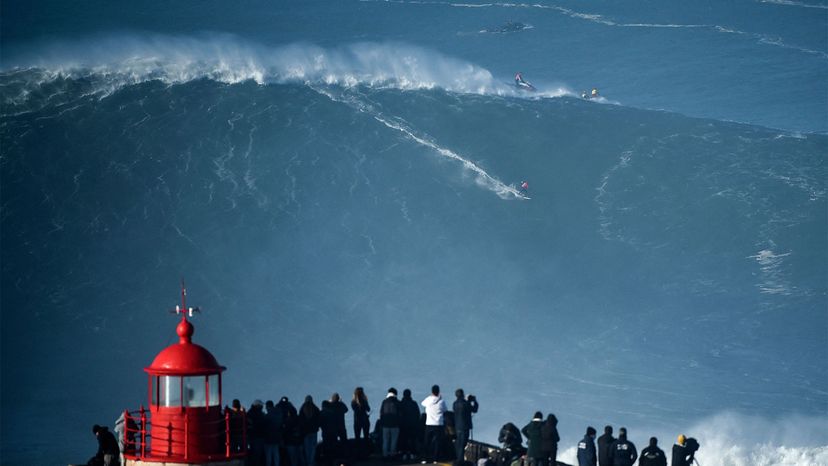At first glance, Nazaré looks like your typical European beach with a sandy shore and (for much of the year) relatively placid waters. When conditions are calm offshore, you can actually have a very normal beach day at Nazaré.
Nazaré Canyon
But just off the coast, the ocean floor is anything but normal. It's home to the Nazaré Canyon, an underwater trench that is 140 miles (230 kilometers) long and up to 16,000 feet (4,877 meters) deep. And it's this underwater canyon that turns normal waves into monsters.
When inbound waves speed toward the Portuguese coast, Nazaré Canyon splits them in two. Some of the water dives into the canyon while still propelling forward. The rest of the water pushes forward, creating the same kind of wave that happens anywhere a continent meets the sea.
Nazaré Canyon ends right by Nazaré's Praia do Norte (North Beach). At this point, the canyon's inbound water gets pushed upward as it hurtles toward the Portuguese shore. This wall of water combines with the surface-level wave. The two stack on top of each other, creating a double wave that is especially large.
Constructive Interference
As Edward Santilli, a physics professor at Thomas Jefferson University, explains it: "Most of the time, waves interact randomly and produce nothing special. But if they meet in just the right way, they can either annihilate each other (destructive interference) or join forces to make a new larger wave (constructive interference)."
Nazaré is a great example of constructive interference. It's the offshore canyon that makes constructive interference such a potent force at Nazaré's Praia do Norte.
"Shallow water waves travel slower than deep water waves," explains Santilli. "Waves tend to slow down as they approach the shore. But this means that the wave's front may be in shallower water than its middle or back, causing the trailing parts of the wave to catch up to the front. As this happens, the wave becomes narrower, but all of that water needs to go somewhere, so it goes up — the wave becomes taller."



